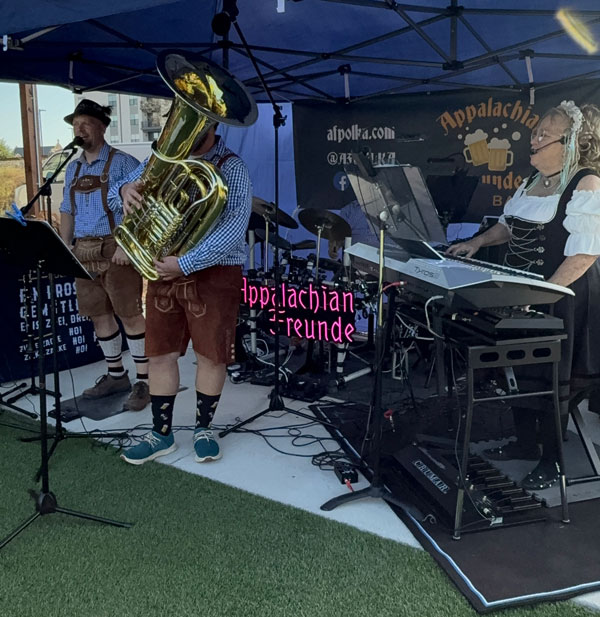The Energetic World of Polka Bands: A Journey Through History and Rhythms
 The Rich History and Enduring Legacy of Polka Music
The Rich History and Enduring Legacy of Polka Music
Polka music, with its upbeat rhythms and infectious melodies, has been a cherished staple of cultural celebrations and dance gatherings for nearly two centuries. Originating in 19th-century Bohemia—now part of the Czech Republic—this lively music and dance style has transcended borders, influencing diverse musical traditions across Europe and the Americas. In this blog, we explore the origins, influences, evolution, and continued popularity of polka music and polka bands worldwide.
Origins of Polka Music
The term "polka" has an interesting linguistic and historical background. Some scholars believe it is derived from the Czech word Polka, meaning "Polish woman," while others trace it to půlka, referring to the "half-step" dance pattern that distinguishes polka from other styles. The dance itself emerged in the early 1800s as a lively adaptation of the waltz and quickly gained popularity across Europe. By the 1840s, polka had spread across France, Germany, Austria, and beyond, captivating social dancers and musicians alike.
Polka's Diverse Influences and Evolution
Polka music is distinguished by its signature 2/4 time signature, a rhythm that drives its energetic and bouncy feel. While often associated with German Oktoberfest celebrations, polka's roots run deep in Czech and Slovak traditions. However, as polka spread, different regions infused it with unique cultural influences:
-
Czech and Slovak Polka: Retains its traditional folk roots, featuring the accordion and brass instruments.
-
German and Austrian Polka: Includes strong "oompah" brass sections, which became a defining feature of Oktoberfest-style polkas.
-
Mexican and Tejano Polka: Heavily influenced by German and Czech immigrants in Texas and northern Mexico, integrating the bajo sexto and Spanish vocals to create distinctive norteño and conjunto styles.
-
Scandinavian Polka: Found its way into Finnish and Swedish folk traditions, often blending with waltzes and other regional dances.
-
American Polka: Evolved into various styles, from the Cleveland-style polka, which is smoother and jazz-influenced, to the high-energy Chicago-style polka, driven by the accordion and concertina.
Polka’s Rise in the United States
The influx of Eastern and Central European immigrants in the late 19th and early 20th centuries brought polka to America, where it flourished. Cities with large Polish, Czech, and German communities—such as Chicago, Milwaukee, and Cleveland—became polka strongholds. By the mid-20th century, polka had gained mainstream recognition, with musicians like Frankie Yankovic, the "Polka King," popularizing the genre nationwide. The dance's lively nature made it a favorite at weddings, festivals, and ethnic celebrations.
The Dance of Rebellion
Polka’s rapid tempo and close-contact style shocked the aristocracy of 19th-century Europe. Unlike the structured and formalized dances of the time, polka embraced free movement, joy, and inclusivity. This made it especially popular among the working class, where it became a symbol of cultural pride and resistance to elitist norms. By the time it reached America, polka had solidified itself as a dance of communal joy rather than social constraint.
Polka Bands: The Heartbeat of the Genre
Polka bands bring the spirit of polka to life, with a typical ensemble featuring:
-
Accordion or Concertina: The backbone of polka music, providing the driving melody and rhythm.
-
Brass Section: Trumpets, tubas, and trombones create the rich, bold sound characteristic of German and Austrian polka styles.
-
Woodwinds: Clarinets and saxophones add melody and depth, especially in American and Czech polkas.
-
Percussion and Strings: Drums, fiddles, and bass enhance the rhythmic drive, ensuring polka remains a danceable genre.
While polka bands traditionally focused on dance tunes, modern polka groups often expand their repertoire to include waltzes, folk melodies, and even contemporary adaptations, ensuring the genre stays fresh and engaging.
Polka’s Lasting Influence and Revival
Despite the rise of modern musical trends, polka has maintained a dedicated following, particularly in regions with strong Eastern European heritage. In the U.S., polka festivals, Oktoberfest celebrations, and ethnic radio stations continue to promote the music. The Grammy Awards even recognized polka music with its own category from 1986 to 2009, further cementing its cultural significance.
Recently, a renewed interest in folk and traditional music has given polka a fresh platform. Younger musicians are experimenting with fusion styles, blending polka with rock, punk, and even electronic music to appeal to new audiences. Groups like Brave Combo and The Chardon Polka Band showcase polka's adaptability, ensuring its legacy continues for generations.
Conclusion
Polka music is more than just a lively dance tune—it’s a testament to cultural resilience, adaptation, and joy. From its origins in 19th-century Bohemia to its lasting presence in festivals and celebrations worldwide, polka continues to bring people together across generations and borders. Whether played at a traditional Polish wedding, a Texas conjunto dance hall, or a modern fusion concert, the polka beat endures, keeping its rich history alive.
So, the next time you hear that infectious oompah rhythm, embrace the energy, hit the dance floor, and celebrate one of the world's most enduring musical traditions!
Contact the Appalachian Freunde Polka Band today for your next event!
